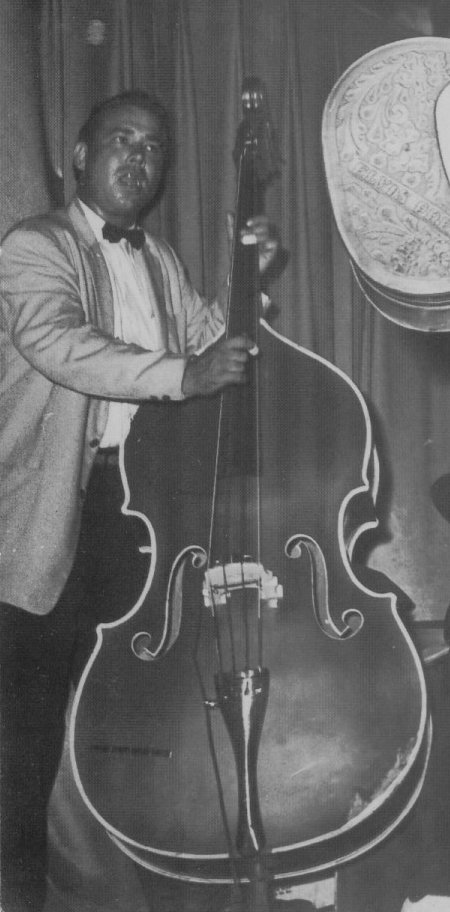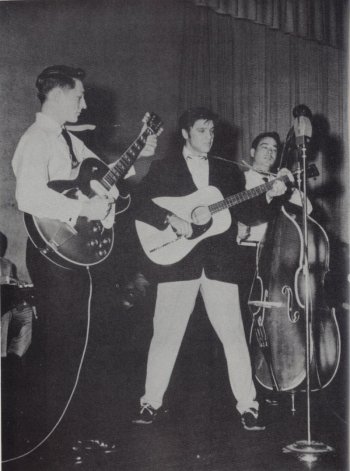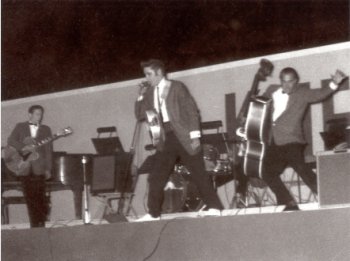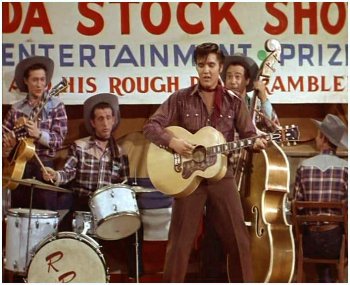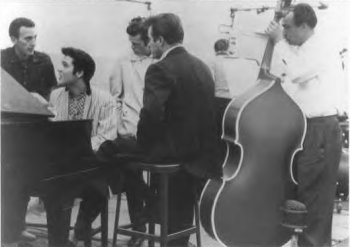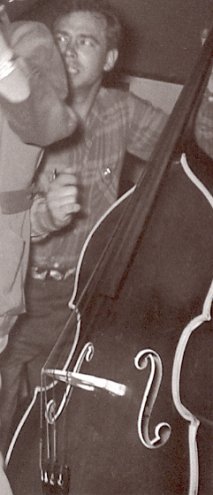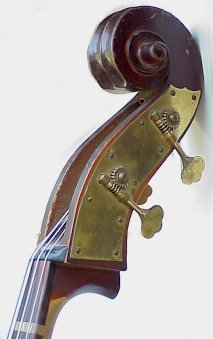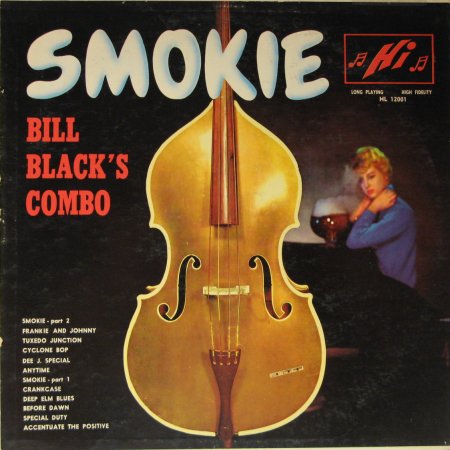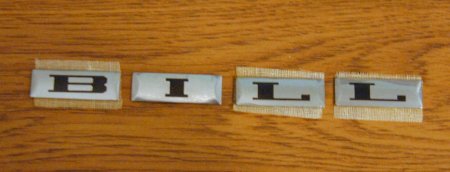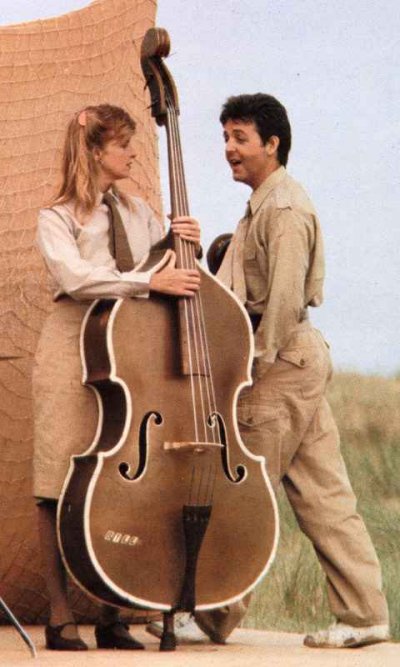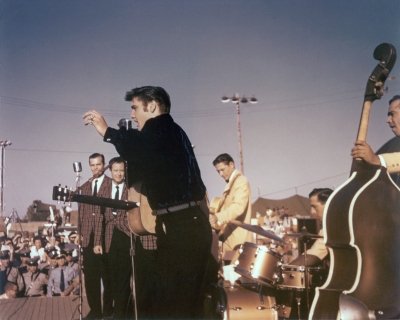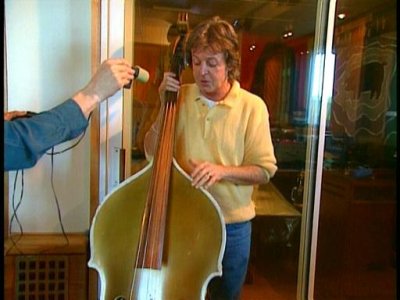 |
Kay Maestro M-1 Bass
Sometime after their first appearance on the Louisiana Hayride on October 16, 1954, Bill Black apparently switched from the concert bass he had been playing to this one, presumably* a 3/4 scale Maestro M-1 Kay bass. According to Sid Lapworth who worked at the O.K. Houck Piano Co., Bill came to Houck's looking for a bass but found none so Sid sold him his privately for $120.00 cash. He is pictured using this one in just about every concert, studio and movie performance after that (except on some TV appearances where he was using a rental) until early 57 when he started using a Fender Precision Bass. Sometime after June of 1955, like Elvis did with his Martin D-18, Bill also applied the rectangular stick on letters (Autograms) spelling his name on the body, though sometime later after the bass was refinished (possibly post Elvis years) the letters were replaced with the more conventional and still available parallelogram shaped ones.
The scrolls are the things glued onto the headstock (top end of bass) that look like roses. These glued-on roses frequently fall off. Pictures of Bill's bass throughout his time using it show the scrolls there and then not. Roger Stowers of the Kay Bass Registration and Information website said the edges on these basses frequently break off and quite likely the white trim was installed to clean up the edges and make the bass look a little better. Sid Lapworth said Bill put tape on the edges for protection when he laid it down and that it wasn't on it when he sold it to him. Other basses with such trim is the stuff used on the edges of car doors. Body shops sell it. Scotty said Bill later had the edges painted white.
Around 1962 Bill sold this bass to Mike Leech. Mike would later become one of the house musicians at Chips Moman's American Sound studios and among many hits would also play on the sessions with Elvis when he recorded there in 1969 (not with this bass). The bass remained in his attic until sometime in the late '70s. Through a deal arranged with Larry Rogers1 the bass was sold to Buddy Killen, possibly for the purchase for Paul McCartney by his wife Linda. Paul considers it one of his most prized possessions and has used it on several occasions to record.
"The second most popular bass shape was the Maestro
model. These basses were shaped like oversized fiddles.
The upper bouts were very similar to the Concert models except they
had pointed corners where the upper bout and the middle bout jointed.
The Maestro model was frequently called the M-1 and was identical in
construction to the Concert models. The only difference was the
corner shape on the upper bout. The Maestro shape was the second
of two bass shapes offered by the Kay Musical Instrument Company. Like the Concert model, the Maestro model had many
variations. The simplest M-1 was brown toned with Kluson tuning gear.
Most complex and decorative were the S models with a Maestro shape. These S models came with inletted purfling around the front and back
edges and around the f-holes. The fingerboards and tailpieces
were made of ebony along with a horseshoe shaped piece of ebony
installed on the neck heel. " page added June 6, 2003
The subject often comes up about the actual color of the bass. We have not yet been able to obtain a color photo (or any actually) from Sir Paul or his management so we can't be certain. Sid Lapworth who originally owned it said that at some point Bill had painted it Gold. Scotty has said several times now that he only recollects it as being brown. Bob Tucker, who replaced Bill as the bass player in the Bill Black Combo in 1962 was in possession of it for a few hours prior to the sale to the McCartneys, recollects it as being gold as does Mike Leech who bought it from Bill. Featured on an early release album cover for the Bill Black Combo shows a gold color and a missing letter from the orignal stick on fonts. Some color photos from the performance in Tupelo in September of 1956 show it as being brown but a discolored still from the movie "Loving You" in 1957 (see above) show it as a light bronze (or gold, assuming its the same bass). If in fact it was or is painted gold then it would likely to have been done so obviously sometime after late 1956 or early 1957.
*not having access to the actual bass to formerly verify the make and model by the ID label inside we've scrutinized as many photos as possible of the profile, shape, tuners and tailpiece to unofficially identify it as a Kay Maestro M-1 1Larry Rogers is currently the owner of Studio 19 in Nashville, Scotty's former Music City Recorders, and business partners with Bob Tucker in the distribution of the music of the Bill Black combo section added April 24, 2005 It has been written that Scotty told Paul in 2000 that Bill used to put Elvis' guitar stings in the inside of his bass and Bucky Barrett confirmed this. Scotty told him, "Bill Black used to change Elvis' guitar strings... sometimes before a show when Elvis was tuning up, he would break a string... Bill would change it then and put the used string in his bass. most of the time after a show he would change strings and he would always put the strings in his bass. Bill would always throw the wrappers away and never put the wrappers in his bass... only the strings." - June 13, 2014
|
